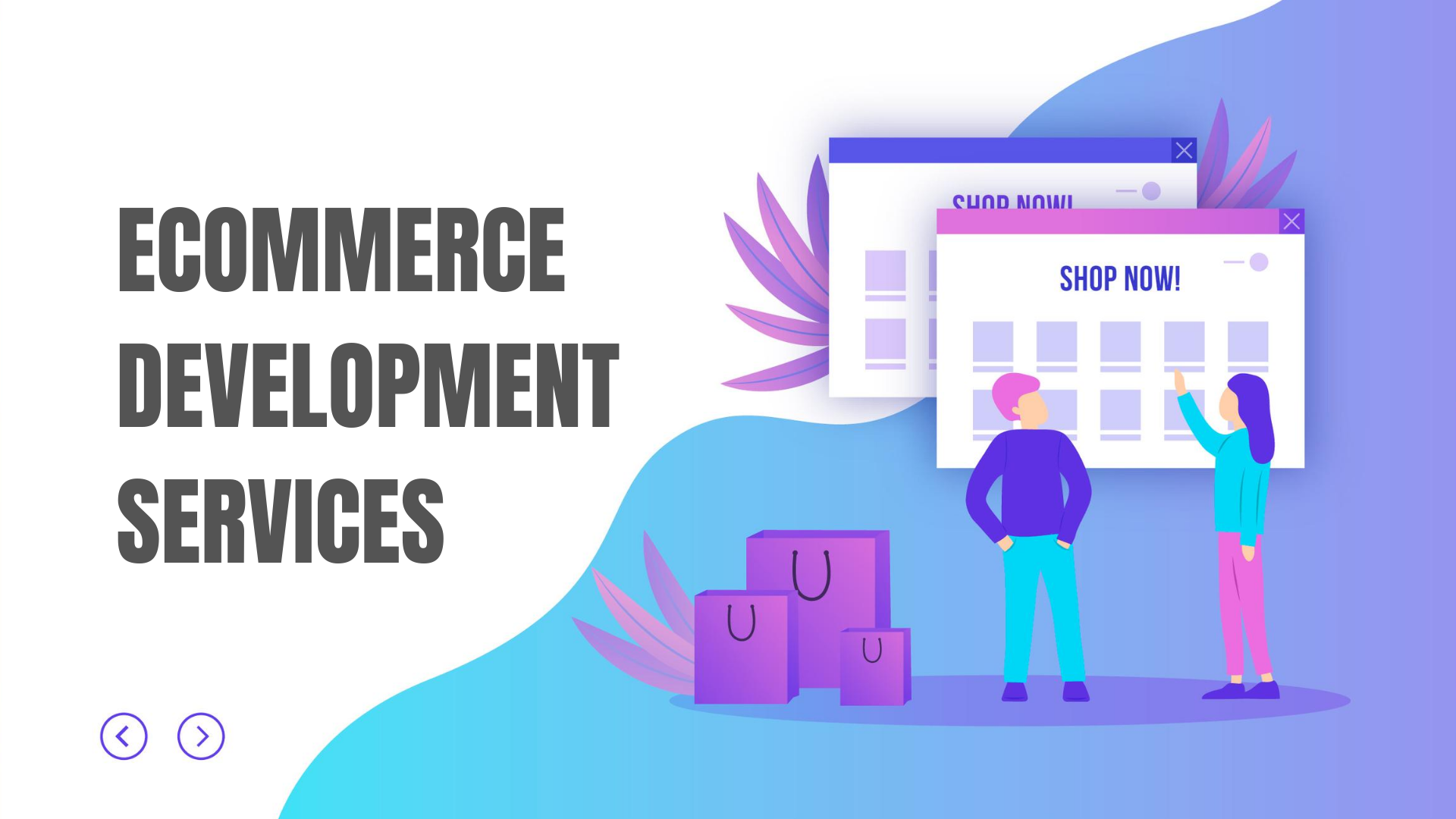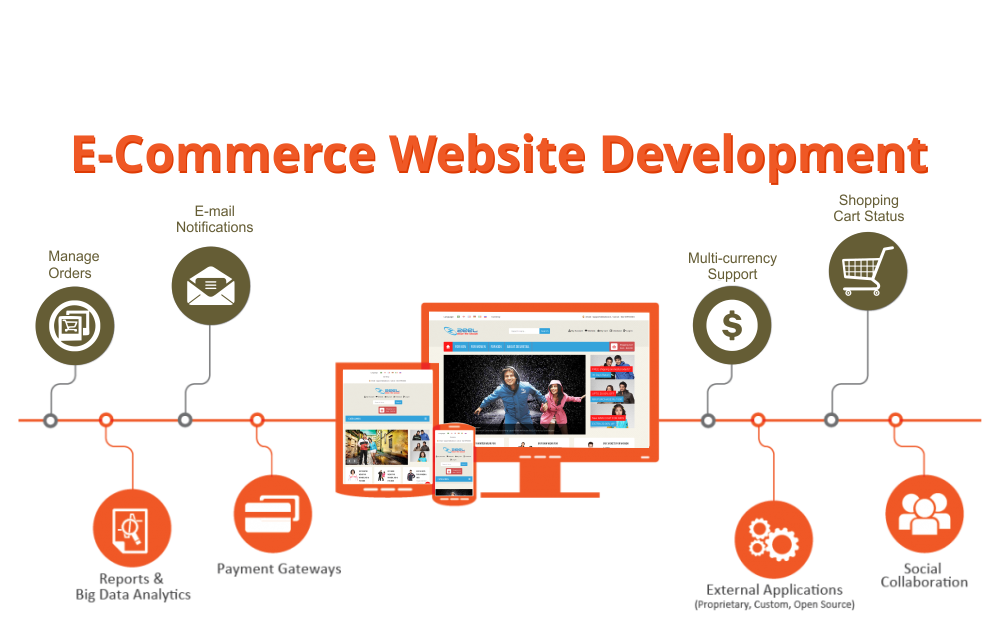A Brief Approach on Developing an e-Commerce Website
Not sure how to start yet considering creating your own online store? No need to worry, though; we’ve got you covered. You will be able to construct your online store fast and efficiently with the aid of our brief guide to e-commerce website development.

Ecommerce Guide to Website Development
1. Research the market and identify your niche.
You must choose a tangible product that you will sell before you construct your internet business. You certainly don’t want to invest all of your time and energy into creating an online business only to discover that no one wants to purchase what you are offering. It sounds awful, doesn’t it? There’s no need to worry, though. Finding your specialty and conducting market research will help you prevent this from happening. You might wish to select a profitable specialty to ensure the success of your internet business. The ideal candidate would be the one with a rising prospective customer base and few rivals in the market.
2. Search for Popular Items
The trends in e-commerce are ever-evolving. The products that are popular today may not necessarily remain popular tomorrow. You must therefore search for a product that won’t go out of style anytime soon. Using various web tools and business strategies to gain a clear view of your industry is always a good idea. There are many different tools available that can be used to find popular goods and services.
3. Select the appropriate business model
To learn how various ecommerce business models differ, continue reading below.
- B2C e-commerce shops Business-to-consumer ecommerce, also known as B2C ecommerce, describes online sales transactions between a company and a single customer. Statista forecasts significant growth in B2C e-commerce in the retail sector over the coming years. The global revenues are projected to rise by 85% from 2019 levels. Online retailers who cater to certain end users should use B2C stores.
- B2B e-commerce shops The sale of goods and services between two firms is referred to as B2B ecommerce, or business to business online. A 2018 poll found that 48% of businesses reported making 50–74% of their transactions online. Additionally, Forrester Research Inc. predicts that the B2B ecommerce market would hit $1.8 trillion by 2023.
- Ecommerce C2C Stores. Online sales transactions involving two or more consumers are referred to as C2C ecommerce, or consumer to consumer, ecommerce. Online environments are made available to consumers so they can engage and buy or sell goods and services from other consumers. The top C2C and buy/sell marketplaces saw more than 100 million visits in 2020, according to Statista. This demonstrates that C2C ecommerce is growing in popularity among merchants who seek to boost sales by engaging with clients they wouldn’t otherwise be able to reach through conventional marketing strategies.
4. Select an online store platform
Once you have decided on the market niche you will be targeting and the item you will be selling. The next step is to decide the platform you’ll use to build your online store’s e-commerce website. There are many options to choose from when selecting an e-commerce platform. Let’s examine the top 3 most potent online solutions for e-commerce.
- Shopify. One of the most well-liked platforms for e-commerce shops is Shopify. One of the greatest ecommerce systems for online businesses is Shopify since its ecommerce sites are so simple to design and configure. Additionally, it offers a variety of e-commerce website templates and themes that can be adjusted to meet your brand’s needs. It is a fully hosted platform with a variety of SEO enhancements. It might be a good idea to engage a Shopify development business to create your website if you are unfamiliar with how the platform operates.
- WooCommerce. Another open-source, completely configurable eCommerce platform that is best suited for small to medium sized businesses is WooCommerce. WordPress users can use WooCommerce to create an online store. The fact that both WooCommerce and the underlying WordPress software are free is one of their best features.
- Magento. Another well-liked e-commerce platform is Magento, although unlike Shopify, building on it necessitates technical expertise. Therefore, the vast majority of online retailers choose to work with Magento development companies to create completely effective online stores.
5. Begin creating your website
When you’ve finished selecting the platform, you can turn your attention to the website’s layout. You might want to look into pre-designed templates that you can buy at a reasonable price if you want to complete the design process quickly and on a tight budget. This, however, might not be your greatest choice. You should stay away from this choice unless you are completely happy with the template as it is. The idea of choosing a ready-made design is effectively defeated because it takes a lot of time and effort to modify this template to seem like the image you have in mind. Therefore, it is preferable to purchase a customized template if you have a certain design in mind. You will be able to obtain the website design of your choosing as a result.

6. Engage in search engine optimization
After finishing the design of your website, you should concentrate on SEO optimization. Your website can rank better in the search results by utilizing the proper SEO tactics. Additionally, receiving organic traffic is based on how relevant your material is to web crawlers. The following are the top two considerations when pursuing SEO optimization:
- Keyword analysis Make sure to conduct thorough keyword research to gain a better understanding of the most popular search terms among clients. It’s likely that your website won’t acquire enough traffic if the content doesn’t target the appropriate keywords.
- Site-specific optimization. Increasing the usability, accessibility, and appeal of your website is referred to as on-site optimization. Use headings, titles, filters, drop-down menus, search boxes, and other user-friendly features to make your website simple to use.
7. Include Payment Choices
The more payment alternatives offered by internet retailers, the better. Studies have shown that if a website does not offer the payment methods that the user prefers, they are more likely to abandon their shopping carts. Try to make the checkout process as straightforward and user-friendly as possible to avoid losing clients as a result of this one significant error. Additionally, it is preferable to offer as many payment alternatives as you can, including cash on delivery, debit cards, credit cards, and so on.
8. Give online marketing the attention it deserves
once your websites have been created, optimized, and are operational. Start marketing it is the following stage. This will promote your website to potential customers and enhance the reputation of your company. There are numerous ways to promote your website or product. Whatever option best suits your company, whether it be email marketing, internet advertising, or social media engagement, you can choose it. Many development firms that provide eCommerce development services also give you the choice of marketing your website online.